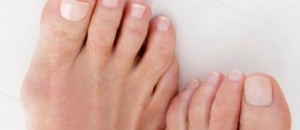
Ingrowing Toenail Treatment Hove
What can a podiatrist do?
It depends on the severity of your condition. For the most basic painful and irritable ingrowing toenail, your podiatrist will remove the offending spike of nail and cover with an antiseptic dressing.If your toe is too painful to touch, your podiatrist may inject a local anaesthetic before removing the offending portion of nail.
If you have involuted nails, your podiatrist may remove the bit that’s curling into the flesh and file the edges of the nail to a smooth surface.
If you have bleeding or discharge from an infection, or even excessive healing flesh (hypergranulation tissue) around the nail, you’ll need antibiotics to beat the infection as well as having the offending spike removed.
Not everyone coming to us with an ingrowing toenail actually has an ingrowing toenail. “Sometimes they have a curly nail which has a lot of debris (dirt or fluff) underneath it or a corn or callus down the side of the nail, which can be nearly as painful. However, if it’s a corn, the pain tends to be throbbing as opposed to the sharp pain you get with an ingrowing toenail.” If this is the case, your podiatrist will remove the debris, and if necessary, thin the nail.
If you are particularly prone to ingrowing toenails from underlying problems such as poor gait, your podiatrist may recommend correction of the underlying problem as well as a more permanent solution to the nail itself, such as partial nail avulsion (PNA). This is done under a local anaesthetic, where 8-10% of the nail is removed (including the root) so that the nail permanently becomes slightly narrower. The chemical phenol cauterises the nail and prevents it regrowing in the corners. This is 97-98% successful. You will, however, have to go back to your podiatrist for a number of re-dressings.
After surgery, the overall appearance of the nail looks normal – to the extent that some people even forget which nail they’ve had done!
Onyfix Treatment
The Onyfix nail correction system is a versatile and innovative product that enables completely painless treatment of almost all forms of involuted and ingrown toenails.

Partial nail avulsion removes part of your toenail and is the most commonly used operation for treating ingrown toenails. It’s about 98% effective.
A local anaesthetic is used to numb your toe and the edges of your toenail are cut away. A chemical called phenol is applied to the affected area to prevent the nail growing back and becoming ingrown in the future.
A course of antibiotics may be prescribed if your nail is infected, and any pus will be drained away.
Total nail avulsion
Total nail avulsion completely removes your toenail. This may be necessary if your nail is thick and pressing into the skin surrounding your toe. After you toenail has been removed, you’ll have an indentation where your nail used to be. However, it’s perfectly safe for you not to have a toenail.
After surgery
After toenail surgery, your toe will be wrapped in a sterile bandage. This will help stem any bleeding and prevent infection. Rest your foot and keep it raised for one to two days after the operation.
To help reduce the pain, you may need to take a painkiller, such asparacetamol, and wear soft or open-toed shoes for the first few days after surgery.
Preventing ingrown toenails
Taking care of your feet will help prevent foot problems such as ingrown toenails. It’s important to cut your toenails properly (straight across, not at an angle or down the edges).
Wash your feet every day, dry them thoroughly and use foot moisturiser. You can also use a foot file or pumice stone to remove hard or dead skin.
Wearing shoes that fit properly will help to ensure your feet remain healthy. You should also change your socks (or tights) every day.
Get in touch today to discuss with us treatment of Ingrowing Toenails in Hove, Brighton and Surroundings
